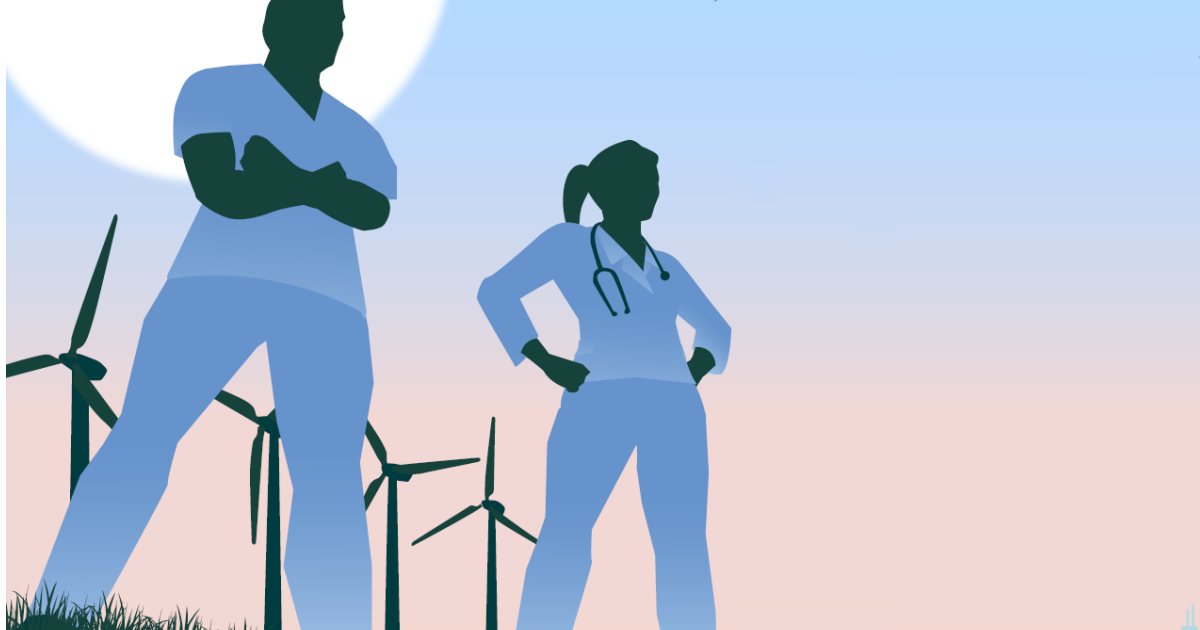
Leading health organisations have teamed up to create an implementation plan to slash health-related carbon emissions in Australia that will not only save money, but improve patient care.
According to the Climate and Health Alliance (CAHA), Australia’s health sector is responsible for 7% of Australia’s carbon emissions. While this figure appears to have been sourced from a study covering the period 2014-15, healthcare remains an energy hog. A necessary one, but things can be done differently.
“Hospitals, surgeries and clinics use huge amounts of energy, and produce mountains of waste each year,” said CAHA’s Sustainable Healthcare Manager, Dr Stefanie Carino. “We can improve this right now by sourcing energy from renewable sources, electrifying transport fleets, expanding telehealth, decarbonising the supply chain, and putting in place water and waste management strategies.”
With regard to renewables and given their large rooftops and energy demands, commercial solar is a good fit for hospitals and other major healthcare facilities.
There has been some action on this front, with a bunch of hospitals installing solar under various state-level initiatives. The New South Wales Government has already thrown a bundle of bucks at putting panels on healthcare facilities. So did the Victorian Government under its Regional Health Solar Program; resulting in approximately 9MW of solar power capacity installed across 74 sites – with more added since.
“The health sector is already getting on with the job. Hospitals and health clinics are taking practical steps right now, with the guidance of state governments,” says Dr Carino. “But we need federal leadership to decarbonise our healthcare system to the scale that’s needed.”
Yesterday, the organisation released a joint statement outlining steps as an immediate priority towards the development of the National Strategy:
Climate Change Already Killing Australians
CAHA’s concerns regarding emissions aren’t just about the future, but also what’s already happened; noting:
- 3,000 additional deaths in Sydney, Brisbane and Melbourne attributed to extreme heat between 1991 to 2018.
- The 48.9 degree extreme heat event in Penrith in 2019 resulted in more heat stress episodes, heat stroke and hyperthermia.
- 33 people were killed directly during the 2019-20 bushfire seasons, an estimated 445 people died as a result of smoke inhalation, 3,000+ people admitted to hospital for respiratory problems and 1,700 people presented for asthma.
“Doctors have a unique view and considerable experience of how climate health and human health fit together because we see the impacts of climate change all the time, on our patients, and on our staff who are at the front line dealing with crises every day,” said President of the Royal Australasian College of Physicians, Dr Jacqueline Small.
More broadly and during the 2022 election campaign, Labor reaffirmed a commitment to develop and implement a national strategy on climate, health and well-being. Now it’s time to get cracking. CAHA has done some of the work, last year creating a climate-health framework called Healthy, Regenerative and Just to support policy development.
One of the key policy recommendations in the framework is legislating a 75% reduction in greenhouse gas emissions below 2005 levels by 2030, and net zero greenhouse gas emissions by 2035.

 RSS - Posts
RSS - Posts



Given government is failing to provide hospitals where they’re needed, can’t or won’t fund the necessary number of doctors and nurses, and is failing to address the shortage of medical students training to become GPs or work outside the capital cities, this seems like a really low priority.
Deaths allegedly due to climate change are theoretical. Deaths due to failures by the medical system are not. IF government resolves the critical issues then it can worry about healthcare emissions. To do otherwise is to show that politics and PR trumps saving lives and providing essential quality care.
George Kaplan,
“Deaths allegedly due to climate change are theoretical.”
It seems to me you have selective vision, filtered by your apparent ideological narrative of climate science denial. IMO, your latest statement denies the data referred above in Michael Bloch’s post:
George, while perhaps you sit comfortably where you are (for now), insulated from an already increasingly more hostile climate, there are many millions of people already experiencing the deadly effects of a changing Earth System, like for example:
https://www.abc.net.au/news/2022-09-06/pakistan-floods-climate-change/101394060
It’s only a matter of time when it begins to impact everyone alive.
In the YouTube video titled ‘Biggest Scandal in Climate Policy’ – David Spratt on Tipping Points, IPCC, IAMs and Risks, David Spratt talks about the difference between acceptable risks & existential ones & how we may/should respond to them differently, from about the 43 minute mark: